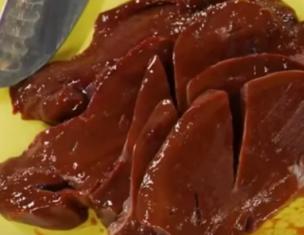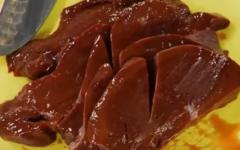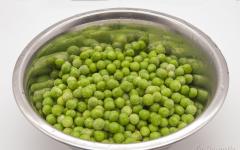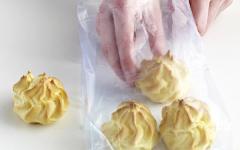Each person wants to breathe in the winter the smell of freshness, the smell of summer. To do this, smart housewives prepare for future use of greens to please their loved ones. If you add dill in soup or borscht, the fragrances will spread to the entire room. About how to prepare dill for the winter, you can learn from this article. Each way is very accessible and simple, and you can enjoy the taste of greenery in winter.
Storage in salt
Dill is the fairy-tale grass that is in the garden. This is useful for preserving cucumbers, and this is an excellent addition for many. The only problem is that it will soon fade after harvest. Do not worry, the fragrance of your fennel will remain the same, and you can extend its usefulness and keep it fresh for several months.
How to freeze fresh dill for storage
The key to keeping the dill weed as fresh as possible actually depends on the drying and then the freezing of the grass. It seems strange, but it's really the best way to keep this delicate grass. Before you begin to store the dill, it is enough to divide and place the stems in a jar filled with water, as if you were cutting flowers. It's an easy way to keep lots of herbs fresh for a week.
There are several known methods, to freeze it, salinize or dry it. Let's learn more about each method.
Frozen dill
To prepare dill for the winter by the method of freezing, take a few bunches of greens, it is desirable to take a young dill, only cut from the garden. Rinse it thoroughly under running water and let it lie down for a few minutes, so that the remaining water remains. Then cut the fennel and spread it in freezerto let it freeze. After an hour, remove the dill, loosen it, fold it into a plastic bag and put it back in the freezer. Now your greens can safely wait for the winter. It's enough to take a pinch so that your food gets a pleasant scent. Such greens can be added to all the first and second dishes.
When you choose the fennel you want to keep, follow this method to make sure it stays as fresh and pleasant as possible. Frozen grass will remain usable in winter. Depending on how often you use it, it can even continue until your dill plants begin to grow again in the spring.
Remember that if you intend to use dill in canned food, it is better to use both leaf stalks and flower heads. This maximizes the effect of the aroma of your herbs. As with most herbs, it is better to harvest later in the morning after the dew has evaporated, as this happens when the plants are more fragrant. It is enough to dry the fennel, allowing it to hang upside down in order to keep the best shape. You can also put it on an absorbent material, such as a plate or layers of paper towel. Do not let the dill crunch dry, you just want it to lose most of its moisture. Place the washed and dried dill in a sealed container, such as a bucket and close tightly. If your container allows the grass to sit upright, you will continue to keep this attractive shape in the freezer. Place the container in the coldest part of your freezer until it is needed.
- Select the fennel in the freshness peak.
- Rinse dill leaves and flower heads with water to remove dust and insects.
- Shake the herbs gently to remove most of the moisture.

There is another way to freeze. Finely chop the prepared dill, fold it into ice forms and pour well with water. Put in the freezer for about 3 - 4 hours. When ice is formed, the resulting dill cubes are poured into a separate bag and stored in the freezer. This method is convenient because in the green, the greens do not lose their color so quickly and do not freeze. Cubes can be added to the pan during the preparation of the first courses. It is worth noting that with any frost, the greens retain not only the color and smell, but also their own taste qualities.
How to prepare seasoning from greenery
If you have a large fennel crop, you may want to think about freezing and drying the herb to give you options when cooking. Just let it hang upside down in bundles about 1-2 weeks. When the grass becomes crunchy and collapses with a pinch, it is ready to be stored. Working on a large bowl, sprinkle the leaves from the stem and into a bowl.
This should be a difficult task, and if the dill is dry enough, you should be able to perfectly handle your hands. After it is full to your taste, place the dry dill in a glass jar with a tight-fitting lid. As with most dried herbs, dill will persist for a year.
Pickling dill
This method is slightly simpler than the previous one. Prepare the dill, as in the first method. Cut it and put it in a deep bowl. Take the salt based on 1 kg of greenery 200 g and pour her dill. Thoroughly mix everything, put in pre-prepared sterilized jars. In this case, the greens can let the juice, which must be drained. Close the jar with a lid and put it in a cool place. Salted greens are suitable for adding to soups, borscht, dressings, etc. In doing so, count the amount of salt in the dish, as dill, too, with salt. 
When the dill begins to grow again in your garden, throw any unused dry fennel and choose fresh during the growing season. Come back in autumn, just harvest again. Dill, a native of the eastern Mediterranean and Asia, is a grass that has been widely used in cooking for several generations. It is the main ingredient for such as carrots, beets and cucumbers. In fact, dill cucumbers, which are so fond of - these are just cucumbers, which were marinated with the use of herb dill.
It is for this reason that dill is sometimes also called "marinated grass". This annual is easy to grow and maintain. If you decide to plant dill in your garden, you can come up with it for yourself with minimal effort. While dill is also available in most supermarkets, fresh dill leaves contain a lot of or fennel. However, the drying of dill is an option that you can consider for long-term storage.
Drying of dill
To dry the dill for the winter, it is necessary to rinse it and let the water drain. Finely chop the greens and spread it on a clean surface in the shade. It is best to dry in sunny weather, stirring every 30 to 40 minutes. Dry the dried dill in a tissue bag and put in a cool dry place.
Now you know how to keep dill for the winter. Apply several methods for harvesting, then you will always have the opportunity to add greens to all dishes. Valuable vitamins, which contains dill, help you strengthen the immune system. In such ways, you can save not only dill for the winter, but also parsley, coriander, green onions and other greens. Glad your loved ones with the pleasant aroma and taste of greenery in the cold season!
If you want to store fresh fennel in the refrigerator, it lasts longer in the absence of excessive moisture. Therefore, if possible, avoid rinsing dill before storing. There is no need to wash the dill that was grown without the use of pesticides before putting it in the refrigerator. Thorough washing should be necessary only if you find any mistakes or dirt in the dill weed, and even then you must carefully dry it before storing.
Storage of fresh dill in the refrigerator
After you are from your yard or bring it home from the store, make a thorough inspection to exclude any insects, worms, bugs and excessive dirt. If everything looks good, just lightly shake the stems and place them in a plastic bag. Add a piece of paper towel to absorb any condensation that may form inside the bag. When stored in the refrigerator in this way, dill can last up to 10 days and maintain its freshness.
At the beginning of summer, fresh scented greens appear on our summer cottages - this is parsley. and dill, and basil, and coriander, and other herbs. We gladly use this greens, adding it to salads, preparing hot dishes, and just fresh. In our family everyone loves fresh greens, and we at every meal eat it on a plate with the first or second dishes.
You can also hold the stems in a jar or vase with water and cover the leaves with a plastic lid for a more lasting taste and freshness. If you do this, make sure that the jug or vase is tightly sealed, as water and air will create the kind of moisture mentioned above, leading to wilting.
For best results, keep the temperature in the refrigerator below 40 degrees Fahrenheit. If you freeze fresh fennel, it can last several months and at the same time give a good, strong flavor. You can either freeze dill as is, or you can cut it off before storing.
But the greens grow faster and faster every day. You do not have time to look back, as she already can "go to the arrow" or "to the umbrella." And without waiting for this moment, the greens need to be preserved, harvested for the winter. It's just the time when she got the most vitamins and other useful substances. It is important to preserve this wealth, so that in winter everything will be "our own", not a storehouse, a hothouse one.
To keep dill as is, remove the lower part of the stem. Spread the leaves on a white paper towel and find any signs of worms or dirt. It is best to conduct this inspection under a bright light so that you do not miss anything. Then divide the leaves into different sections.
In each section there should be approximately the amount of dill that you use for each cooking session. So, all you have to do is take out one serving and use it every time you need dill. After you have divided the dill weed, place each section in the freezer storage bags and place them in the freezer.
There are several ways to prepare fennel and parsley for the winter, it is we who are most often harvested.
Methods of preparing dill and parsley
- Frozen - is considered the best way to harvest greenery. It helps to save up to 90% of nutrients and vitamins
- Salting - allows you to save up to 70% of vitamins and nutrients
- Drying - this method preserves only 50% of useful substances and vitamins
- Marinating - probably there are no vitamins left, but it is tasty to use as an additive to a dish or as a snack
Frozen dill and parsley
Before you freeze greens, it should be sorted, remove excess grass, cut off rough stems and thoroughly rinse. Then it must be dried, so that not a drop of water remains. Dry it should not be long, only that it dried out. Greens, especially dill, quickly lose moisture, and with it the aroma and color. Therefore it is desirable to process it on the same day as collected.
You can also cut the dill and store it in the freezer. Avoid grinding it too finely, as this can lead to loss of taste. First, wash the dill and shake out excess water. Place between paper towels so that all moisture is absorbed. You can also put the leaves on the rack for some time, until the moisture evaporates. Avoid leaving the dill for too long, since the leaves may be too dry.
After removing excess moisture, cut out the leaves and divide them into portions. Store each portion in a freezer storage bag and store in the freezer. For sauces and soups, try to freeze dill in ice trays. Rinse and dry. and cut the dill, and put a bit on the bottom of the individual slots of the ice cube.
The cold, namely the freezing of greenery, helps to ensure that it is as quickly dehydrated as possible. This is what allows you to keep the maximum amount of vitamins, and color, and of course, that is important - the smell!

You can freeze it in many ways.
In addition to providing aromatic seeds and foliage, dill will decorate your garden with its yellow-green flowers in spring and autumn. This is a warm season, but very fond of mild weather - not too hot, not too cold. With its thin stalk and tender leaves, it makes a good addition to the trailing edge, complementing your garden.
Preservation of dill for the winter in oil
Try to grow dill in a place where it can easily be restored. This clever window box design has dill, like a tall plant, for cherry tomatoes, begonia, koleus and lanthanum. This plant likes soft weather and is best in spring and again in autumn. You can plant the plants after the last spring frost, and then refill them two months before the first winter frost. Their space is 12 to 15 inches apart.
1. Cut parsley or dill greens, put them in frosting bags or plastic containers and put in a freezer, in portions at a time. Why portions? Because if you took greens from the freezer and thawed it, then it would not be possible to freeze it again. It thaws very quickly, and during this process water is released, and since the greens are very tender, it quickly "scraped". Therefore, we freeze at one time. Got it and immediately used it.
Be sure to keep the plants watered in dry weather. Plants may need to lay down when in flower to keep high flower stems - real butterfly butterflies - from falling, especially if you get a lot of wind. You can trim plants to slow flowering, increase yields or harvest the entire plant as soon as it blooms. The first winter frost will destroy the dill planted in autumn. However, if he had time to go to the seeds, the fallen seed could produce new plants in the spring.
Caterpillars of a black butterfly butterfly are likely to find your fennel. Let them be and enjoy the beautiful butterflies in your garden. Some growers grow enough dill for themselves and caterpillars. Dill plants far from fennel, as cross-pollination of these herbs gives variable results. Dill, like parsley and fennel, draws a caterpillar of parsley, which is a larva of a black dovetail butterfly. It grows enough to feed itself and caterpillars. Far from the pest, butterflies are often encouraged by gardeners who grow dill and parsley in patches to attract them.
2. Very good way, when the dried herbs are not cut, but entirely wrapped in food film. Also in the sachet, the greens should be for one use.
3. You can freeze the greens in ice-freezing capacity. Very convenient, small capacity just for once. There are two ways to do this.

Will's yellow flowers are the signal for harvesting. If you like the fragrance of dill, use flowers and foliage in a cut. Harvest dill foliage at any point between seedlings and flowering stages. You can collect all the dill plant, keeping the foliage as soon as the plant starts to blossom and plant the seeds. You can freeze the leaves by flipping the entire branch, putting it in a plastic bag and storing it in the freezer. Flowers last for several days in a vase if you want to display them, but be prepared for dust under them when they break up.
- grind greens, you can use only dill, or only parsley. And you can mix them together, or add more of your favorite herbs. Tightly put in a mold to freeze the ice and pour water. The ratio of the two parts of the green and one part of the water. I've heard that it uses either butter or vegetable oil for this purpose in the same proportion. It turns out dill oil, or "green oil". But did not try, so on this occasion I can not say anything.

Dry the fennel flowers and harvest the seeds for use in the kitchen, including as a flavoring in canning recipes, such as pickles and sauerkraut. Seeds of dill are a sharp ingredient found in salad dressings, pickles, sauerkraut and even bread. Enjoy the leaves on the peak when they are fresh, finely ground for a better taste. Dill can also be a convenient salt substitute for people with a low sodium content. You can dry the leaves, but add them to the dishes in a larger amount, since they are less fragrant than fresh leaves.
- the second way is also very pleasing to me. You need to grind the greens in a blender. Then place the contents in the ice molds. Add water or oil is no longer needed. All and so will solidify. In this version, I like to mix different herbs. One such cube will enrich with its aroma and taste any first or second dish. And even cold winter will give us a feeling of sun and warmth.
- and in the first and second cases, the contents of the molds are frozen, then we shake everything into a bag and send it to the freezer. We use one cube for one cooking.
- with such dice you can wipe the face and décolleté zone. So there is another reason to consider this way of harvesting. Vitamins and cold for the face - a wonderful cosmetic!
Frozen so green can be stored in the freezer without losing vitamins, taste, color and odor from 6 to 8 months. That is, just if you froze in September, it will be enough until May.
So, frozen dill is used for cooking first and second courses, for hot appetizers and salads. For fresh salads it is better not to use it. When frozen, its structure collapses, and the look is not entirely aesthetic. In addition, it can slightly bitter, which in hot form will not be felt.
Also, frozen greens can be well added to pastries, or used as fillings (for example). And other methods of procurement for this option are completely unsuitable.
Pickling dill and parsley
This method is not loved by all the mistresses, because when using it, the greens lose their color, because the salt takes the juice from the plant. But still it is used by many, as well as used once, when there were still no refrigerators in sight.
This is a very simple way to harvest greenery.
- to start it should be sorted, remove the rough stalks, rinse and dry as well as the first option.
- then cut it and put it in clean, preferably sterilized cans. Banks should also be carefully dried. Lay out layers of 1 cm. The first and last layer is salt.
- a layer of greenery, a layer of table salt ... and so on. Do not use iodized salt, the color and parsley, and dill will be lost.
- thus filling the jar to the top, help yourself with a spoon. Then shake it, wait a little while the mixture settles and let the juice go. Then refill up to the top. Close the plastic cover.

- store, salted so the greens, should be in the refrigerator.
- you can grind it also with salt in a blender, and store in a closed jar in the refrigerator. But I like the first way more. I like it when the green is visible in the dish.
- use the contents of the cans as necessary, always with a dry spoon. Then cover with a lid, continue storage in the refrigerator.
During use, do not forget that the greens are salty. Therefore, first put the greens, and then the salted dish finally!
Salted greens can be used for cooking hot dishes and for cold salads.
Drying of greenery and its storage
Many people use only this method of harvesting greens for the winter. Maybe because of ignorance, that in this case only 50% of vitamins remain. Or maybe just the old fashioned way. Or maybe because with this method of harvesting, dried herbs have the most intense taste and aroma. Whatever it was, the greens were dried, dried and dried.
There are also several ways of drying greens, and they are all very simple. For all options, the greens are again cleaned, washed and dried on a towel. With this method, you can dry and rough stems, only you have to cut them as small as possible.
I usually dry separately soft soft twigs, and separately the stems. I then grind the stems in a coffee grinder, and add them to various dishes. They produce a very good rich flavor. And the sliced tender parts of the plant I add to the dish for beauty.
- greens are crushed. We cover the baking tray with baking paper, spread the greens on it and put it in the shade. It is desirable that the place is well ventilated. In the sun it is not recommended. Under the influence of ultraviolet it quickly loses color and smell. Protect it also follows from dust and insects. It will dry 2-3 days. During this time, it should be periodically stirred and turned over. On the first day, this should be done especially often.
- you can dry the greens with bundles, bandaging the stems with thread. Also keeping it from the sun and dust.

- dry the greens in the oven at low temperatures. The first 2-3 hours dry it with the door open, and at a temperature of not more than 40 degrees. Then the temperature is slightly added, and dried until ready, stirring occasionally.
- But this method is better not to use at all, since during processing all volatile essential oils evaporate, thanks to which each kind of greens has its unique smell. In addition, the greens turn yellow, it becomes ugly. And does not give the dish no color, no smell, no vitamins. What is it needed then?
- it can be dried in special dryers that are suitable for drying fruit, vegetables and, of course, various herbs. They have very low temperatures and constant air movement. This is the most the right way drying.
- stored dried herbs in paper bags, without air access. Or in glass jars with the lid closed.
Used dried herbs for cooking first and second courses and for cold salads
Pickled greens
Recently, more and more often I hear that the greens are marinated. In the past year she decided to pickle dill. And I can say that I liked it. Having opened a jar, it is possible to add a tasty odorous grass to meat, a fish in the form of snack. Also good is such dill to boiled potatoes, to vinaigrette and to any side dish. I decided to do it every year. Especially, what to do - it's very simple!
- we sort through the dill, remove the coarse stems, and rinse thoroughly.
- to my bank and sterilize it.
- in the jar we spread out the leaves of horseradish, currants, cherries, several cloves of garlic.

- stuff the jar with dill
- do a brine: put half a liter of water 1 tablespoon of salt, 4-5 peas of sweet pepper, and a couple of leaves of a laurel. Bring to a boil.
- fill the brine with fennel. Add 0.25 teaspoons of acetic acid, or 1 tbsp. spoon of 6% vinegar.
- sterilize the floor liter jar 15 minutes, then close the lid. I usually twist the jars with iron lids, but someone twists them with reusable lids or closes them with plastic covers. There are no recommendations, who as usual, he does so.
- let's cool down. We store in a dark cold, if covered with plastic covers or a cool place, if it was closed with iron.

When preparing dishes with harvested greens for winter, several basic rules should be taken into account
- if you are preparing the first or second course, then the greens should be added at the very end of cooking, 5 minutes before cooked.
- add a lot of greenery is not necessary. If you overdo it, the dish can get a bitter taste
- add greens of different degree of harvesting according to recommendations.
And finally, a couple of tips. If the fennel has already grown, and seeds have appeared on it, do not throw them away. Collect the dried, and then use as a seasoning for the dishes. Many Italian chefs successfully use them that way.
Try to make any blanks only with a good mood and with love. And let all your dishes be filled with the same!
Bon Appetit!









